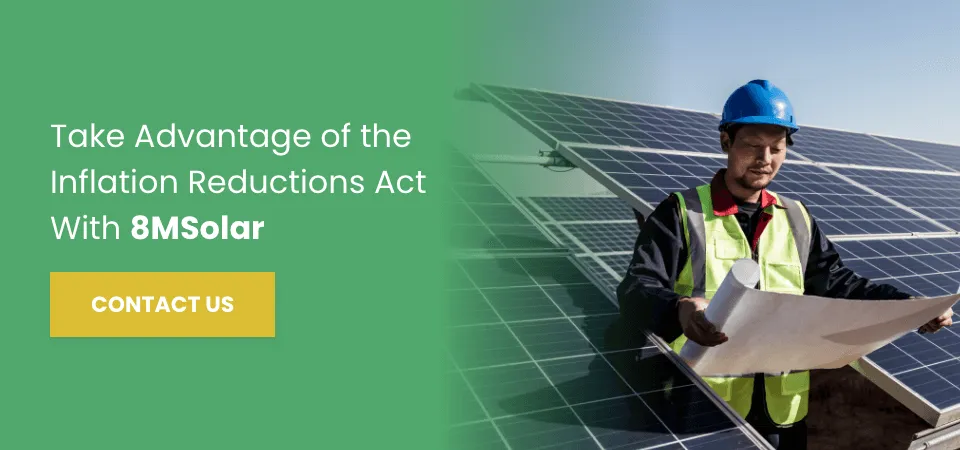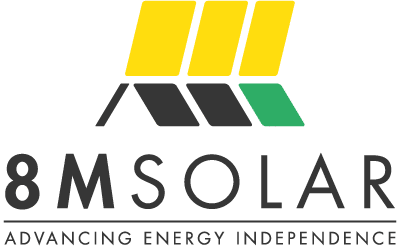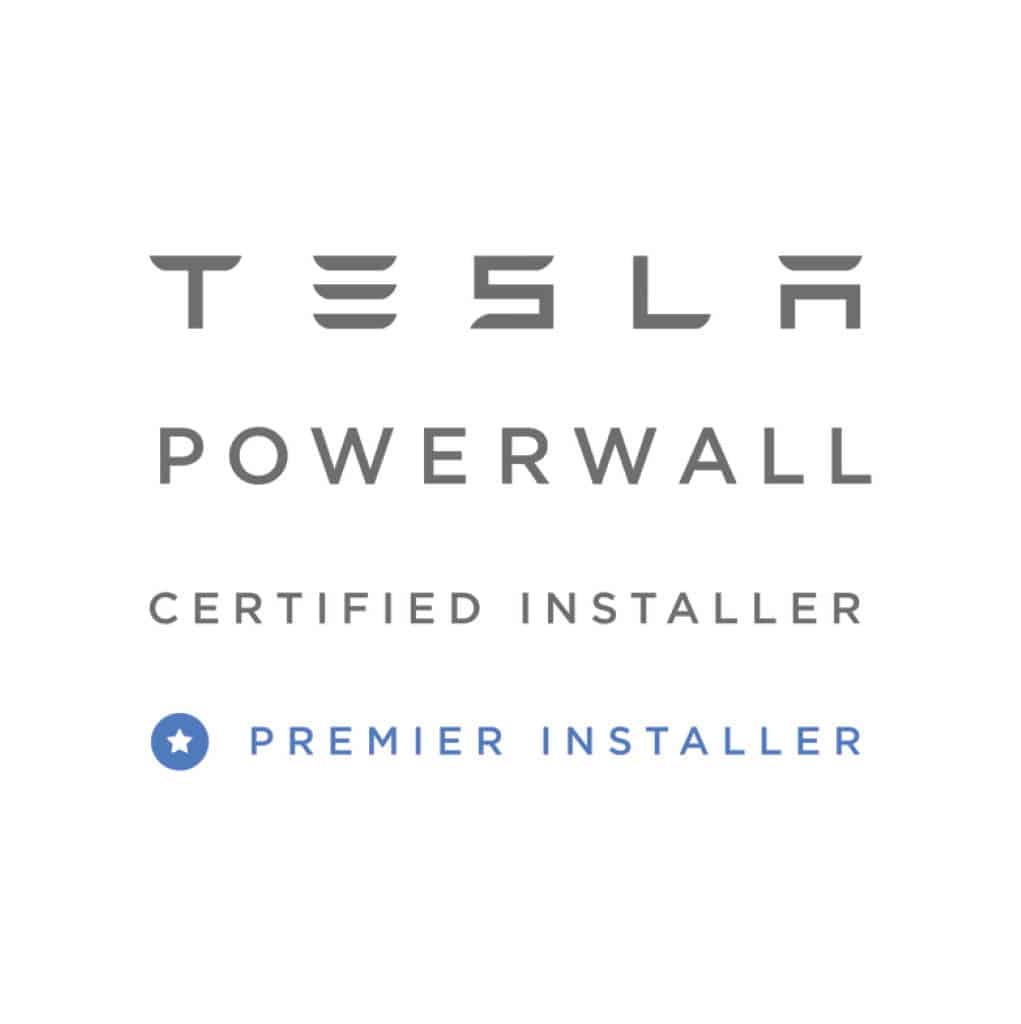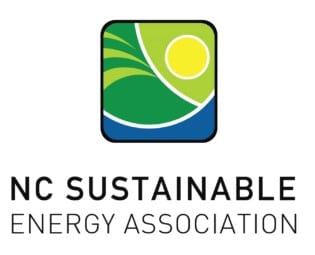
Businesses, homeowners and other entities are shifting their mindset toward clean energy as demands for environmental sustainability and accountability rise. As a result, we’ve seen legislators introduce bills to benefit those who switch to clean energy, incentivizing individuals and entities choosing to invest in various forms of renewable energy.
None of this legislation is quite like the Inflation Reductions Act (IRA). The IRA is helping the United States reach its climate goals. Continue reading to learn more about the IRA and its effect on the solar industry.
What Is the Inflation Reductions Act?
The IRA was signed into law on July 27, 2022. The IRA includes approximately $369 billion for climate and energy spending and supplies government support for clean energy development, intending to slowly transition to a sustainable energy economy. This bill aims to speed up the process of clean energy technology production, lower energy prices, create a reliable energy industry, focus on American innovation and reduce carbon emissions.
Ideally, this bill and its included provisions and credits will help encourage clean energy production at home and more consistent innovation abroad. Additionally, the IRA’s focus on low-income communities and displaced workers would help create an equal, fair and economically clean energy transition.
How Does the IRA Affect the Renewable Energy Industry?
The bill includes tax credits and provisions to incentivize the switch to solar energy and improved solar technologies. Below are the different tax credits and provisions available under the IRA:
Renewable Energy for America Program (REAP)
The REAP provides financial assistance to entities that want to implement clean technology in rural areas, helping these companies afford solar technology where they might have been unable to before. Here are the details:
- It includes $2 billion worth of funding until 2023 to provide guaranteed loans and grants to small businesses, farmers and ranchers in rural areas, so they can invest in solar technology or improve existing systems.
- The federal share of grants has an increased maximum of 50%. It was previously 25%.
- Over $300 million is now set aside for loans and grants for assistance with underutilized renewable energy technology, such as solar.
This program helps businesses shoulder the financial costs of renewable energy so they can invest in things like solar technology, helping move the country towards energy independence and reduce overall carbon emissions.
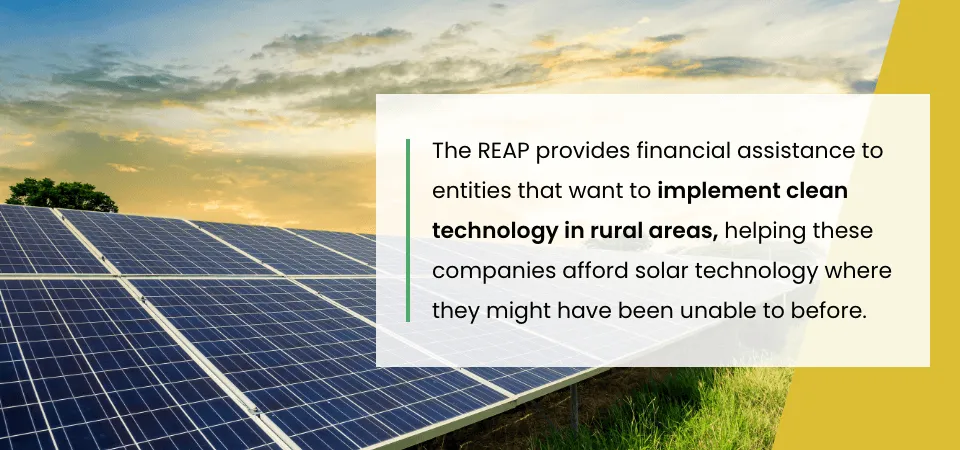
New Clean Electricity Investment Tax Credit (ITC)
Once the existing Renewable Electricity Production Tax Credit (PTC) expires in 2024, the new PTC (48E) will take its place. This PTC is emissions-based and allows individuals to choose between a PTC (45Y) and ITC (48E). The specifications of the ITC and PTC include the following:
- A PTC credit of 1.5 cents per kilowatt of produced electricity at facilities in service after 2024 with no or negative emissions. The PTC applies to electricity that’s either stored or sold. There are 10% bonuses for projects in energy communities, low-income communities and those that meet specific manufacturing requirements for iron, steel or manufactured materials. A 20% bonus applies to clean energy projects in low-income residential buildings or economic benefit projects.
- Entities can reach their qualifying emissions levels through storage, carbon capture and utilization.
- The credits will phase out in 2032 or emissions goals are achieved. In the first year, entities can claim 100%. Then, they can claim 75% in the second year, 50% in the third year and so on until it reaches 0%.
- The new ITC and PTC include direct pay and transferability.
The changes to the tax credit allow facilities to continue to take advantage of the financial incentive that helps many to invest in solar. With the new specifications and addition of the PTC, facilities can benefit from the tax credit for a long time, helping them see a return on their investment and encouraging further investment and exploration in solar technologies.
Direct Payment Options and Transferring Credits
The IRA allows those who receive tax credits to monetize their credits in two ways. Receivers can choose between direct pay (Section 6417), or they can transfer the credits to another taxpayer (Section 6418). We’ll focus on direct payment below since it benefits those interested in pursuing solar energy.
What Is Section 6417?
Under section 6417, tax-exempt entities can get direct pay equal to the tax credit amount rather than trying to find ways to take advantage of the credit despite being exempt from taxes. Entities can utilize direct payment for the PTC, ITC, credits under Section 48E and several other credits.
Entities that wish to use the direct payment option must choose it before the due date of their tax returns in the year in which the choice is made. This legislation includes information on how entities have to process direct pay. Remember that tax-exempt entities that qualify for direct payments will lose their qualification over time, starting out at 100% the first year and slowly decreasing each year.
How Does the IRA Affect Nonprofits?
One significant factor of the IRA is how it positively affects nonprofits. Under this new bill, nonprofits looking to implement solar and solar battery solutions in low-income communities won’t face as many barriers as before. The direct payment option is a game-changer for nonprofits looking to benefit from the ITC after installing new solar photovoltaic (PV) systems and storage batteries.
Before the IRA, tax-exempt organizations couldn’t utilize the ITC due to their status, making it more challenging to afford solar systems. The existing solutions to help these entities access the ITC resulted in fewer savings for nonprofits, making it less than ideal.
The new ITC direct payment option allows nonprofits to receive the ITC as a direct payment rather than a tax credit. These entities can fully benefit from the ITC without jumping through hurdles to find solutions, often requiring complicated financial packaging or intervention from a third-party entity. The IRA helps level the playing field for nonprofits, allowing them to access solar technology, reducing costs and increasing access to community-owned solar systems and storage.
Take Advantage of the IRA With 8MSolar
Investing in solar has numerous benefits under the IRA, such as direct payment for nonprofits, grants or loans for low-income areas and changes to the ITC. These benefits can help offset the costs of solar installation and make it a more worthwhile investment. 8MSolar can help you navigate these new IRA specifications to help you gain the most benefits.
Our staff is dedicated to helping businesses, homeowners and nonprofits find solar solutions. We aim to pair you with a long-lasting system that will continue to provide you with savings for years to come. Learn more about how we can help by contacting us today!
